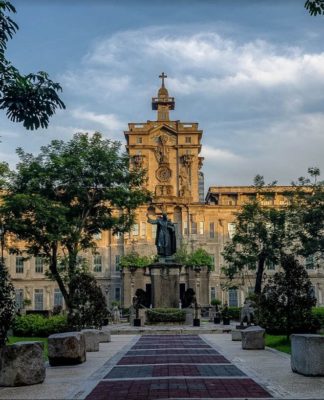THE LACK of clean water due to the worsening state freshwater sources has caused the deaths of about two million people worldwide, data from the World Health Organization showed.
Freshwater makes up 0.01 percent of the world’s water and covers only 0.8 percent of the surface. But this tiny fraction supports at least 100,000 species, almost six percent of the global total.
The decline in the quality of freshwater sources can have adverse effects on fishes and vertebrates in tropical countries such as the Philippines.
Issues regarding freshwater ecosystems and biodiversity were underscored in the recent first Philippine Symposium on Freshwater Biodiversity and Ecosystems (PSFBE) held last June 7 to 10 at the Buenaventura G. Paredes, O.P. Building.
According to Theresa Mundita Lim, director of Department of Natural Resources—Biodiversity Management Bureau, holistic and science-based policy can help preserve freshwater ecosystems.
“Through PSFBE, researchers in the fields related to environment and natural sciences would come up with recommendations for the formulation of a holistic and science-based policy on wetland conservation and management,” she said in her message.
Francis Magbanua, assistant professor in the Institute of Biology of University of Philippines Diliman, added that there was a significant increase of freshwater researches in the country from 1988 to 2012, allowing more room for improvements in freshwater conservation and protection.
“By determining possible research gaps and trends, our study provided information which can be used to direct future research in freshwater science including ecosystem management and conservation efforts,” he said.
Laguna de Bay woes
Laguna de Bay, the country’s largest lake and among the largest in Southeast Asia, is at risk of deterioration due to human activities. The lake is primarily a multi-use water resource used for domestic, agricultural, industrial and economic sectors in the country.
Researches emphasized that proper management of the lake and its watershed areas must be sustained to ensure the viability of Laguna de Bay’s vital resources, which supports the 15 million Filipinos living around the lake as of 2010.
Adelina Santos-Borja, manager of the Resource Management and Development Department of the Laguna Lake Development Authority, said Laguna de Bay earned a passing mark of 76 percent in water quality and a failed mark in fisheries.
Santos-Borja reported from her research titled “The Laguna de Bay Ecosystem Health Report Card: An assessment and communication tool for stakeholders” that these results were influenced by the high concentration of phosphate, high chlorophyll level, and abundance of invasive species causing reduced nutrient enrichment and oxygen depletion from land-based pollution in the lake.
Maria Lourdes Cuvin-Aralar, from Southeast Asian Fisheries Development Center Aquaculture Department, discussed the thriving aquaculture of introduced species in the bay which caused the disruption on its biodiversity on her research titled “Impact of Aquaculture on Fish Biodiversity in the Freshwater Lake Laguna de Bay, Philippines.”
According to her, the dependency of aquaculture on introduced or not native fish species has also brought adverse impacts on the natural fish population in the lake.
“Focusing on the local species for aquaculture will improve fish production of inland water without the accompanying harmful impacts on the lake’s biodiversity,” she said.
David Dudgeon, chair professor of Ecology and Biodiversity at the University of Hong Kong, explained in his keynote lecture that the increase in human activity on freshwaters has adverse efffects on climate, the environment, and the biodiversity of these waters.
“Trajectories of human population growth, water use and consequential disturbance and degradation of inland waters have risen during today’s Anthropocene Age,” he said.
He also stressed the inadequate attention from politicians or decision-makers for the mandate preservation of intact freshwater ecosystems.
“These schemes will undoubtedly impose greater stress on freshwater ecosystems, resulting in further species declines,” he added.
First freshwater symposium
The PSFBE also featured the country’s first biomuseum, TAALAMAN, which dwelt on the vastly unresearched biodiversity of the Taal Lake.
The four-day symposium, which is the first of its kind, had attendees from countries such as US, Japan and Singapore.















